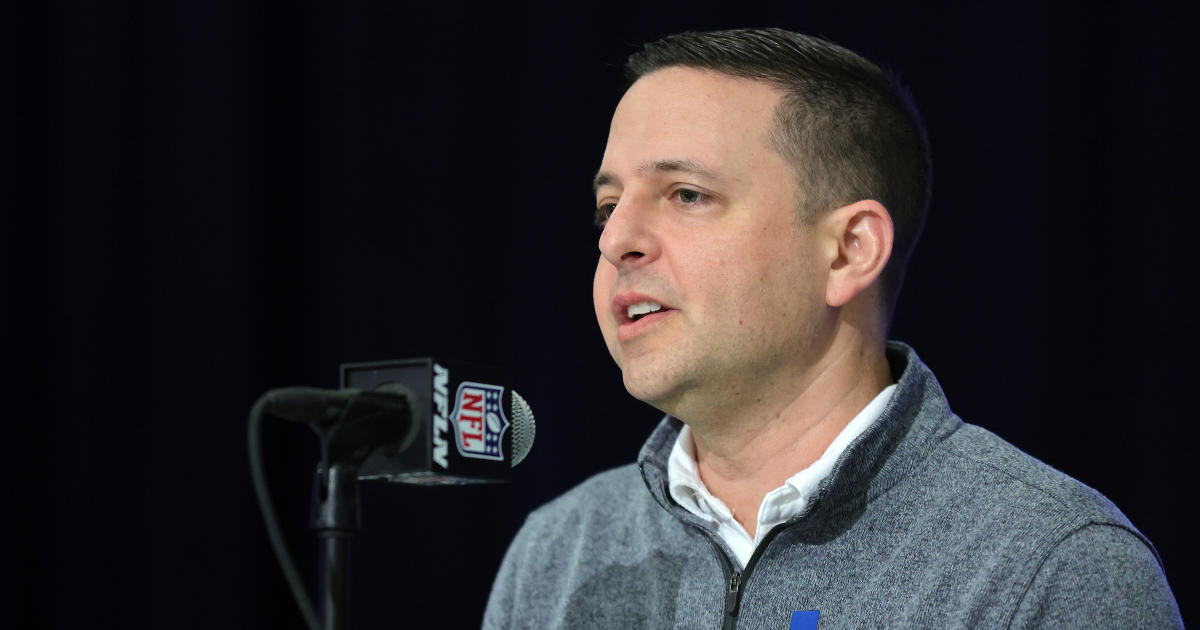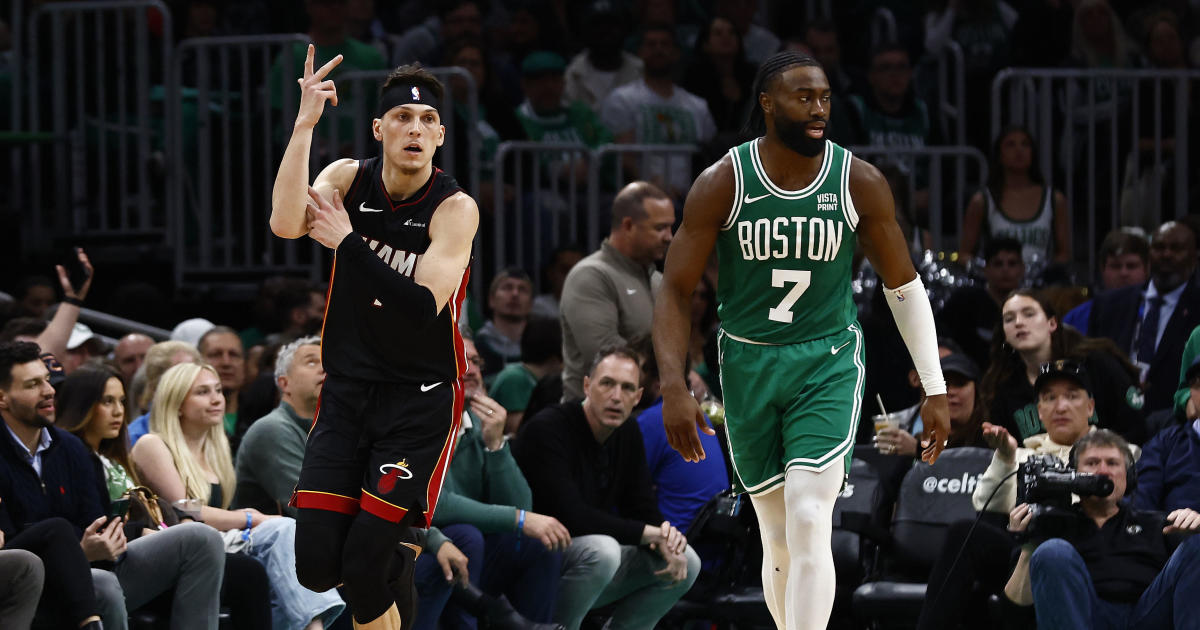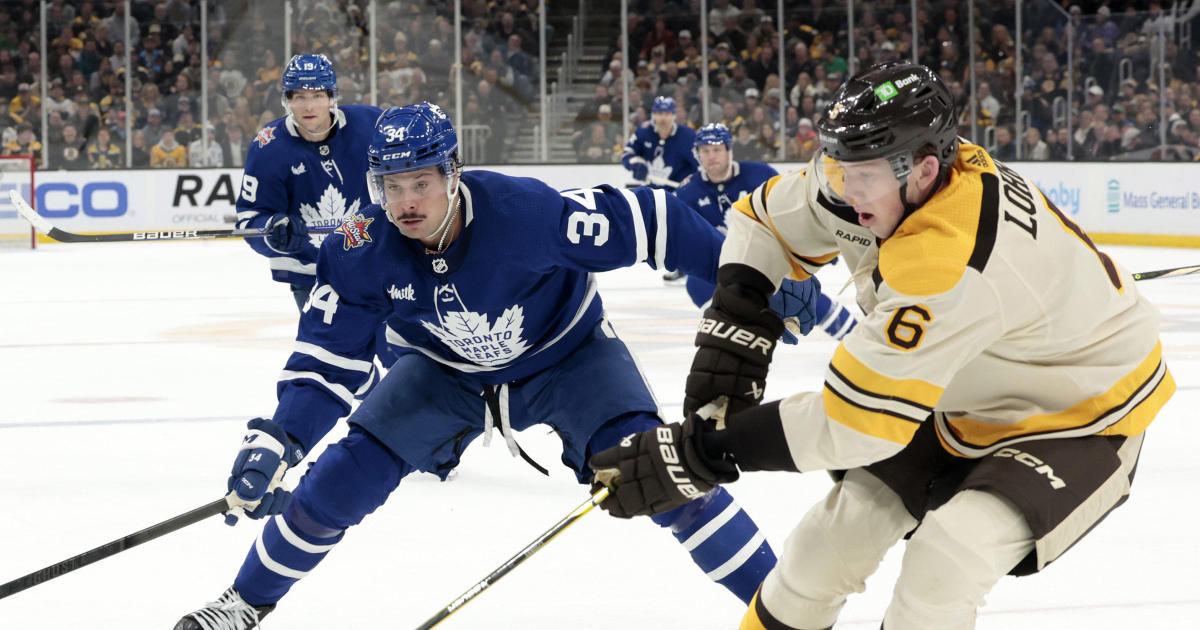Roger Goodell, NFL Only Look Worse After Deadspin Releases Photos Of Greg Hardy's Ex-Girlfriend
By Michael Hurley, CBS Boston
"We allowed our standards to fall below where they should be and lost an important opportunity to emphasize our strong stance on a critical issue. ... My disciplinary decision led the public to question our sincerity, our commitment, and whether we understood the toll that domestic violence inflicts on so many families. I take responsibility both for the decision and for ensuring that our actions in the future properly reflect our values.
"I didn't get it right. Simply put, we have to do better. And we will."
--Roger Goodell, Aug. 28, 2014
BOSTON (CBS) -- Greg Hardy is an atrocious human. We knew this last year, we knew this last week, and we knew this yesterday. We knew it when a North Carolina judge convicted him of assaulting a female and communicating threats. We knew it when he avoided any real punishment, reportedly for settling out of court. We knew it when, instead of showing remorse, or even a shred of human decency, or even an indication that he had grown one iota as a man, Hardy recently chose to refer to the past year as "the most awesome period of my life."
Greg Hardy is despicable. This much is not news.
It was, however, brought back to the forefront on Friday by Deadspin and writer Diana Moskovitz, who published several photos of Nicole Holder, photos that showed the level of pain that Hardy inflicted upon her. Holder's back was covered in bruises. Her jaw was bruised. So was her neck. Her forearm, too. And her upper arm. And her underarm. And her hands. Even her feet didn't escape Hardy's wrath.
The report also includes Holder's testimony to police, in which she described being thrown into a bathtub, dragged around by her hair, thrown onto a pile of guns, and then choked.
"He was gonna kill me, this is it," Holder told police when asked what was going through her mind. "This is the time. He's actually gonna do it."
It's a disturbing story, obviously, and though the photos are sure to stir up a reaction, most of the information was already known to anyone who previously sought out the information.
And Hardy's ability to dodge any real discipline (he likely paid off Holder, according to North Carolina's DA, and he still received his weekly paycheck during his forced football absence last season) is certainly something that warrants a reflection on our criminal justice system. There's no doubt that if any real change is ever to be made, it needs to be made there.
But there is a sports prism from which to view this as well, particularly because two months ago Deadspin and Moskovitz detailed the great extents to which the NFL went in order to secure this very information over the last year.
That report, which was quite lengthy but rather illuminative, explained how the NFL was able to obtain the photos while keeping them out of the public's collective eye.
As per the Deadspin report, an NFL lawyer wrote to the Mecklenburg County district attorney: "Rather than litigate the issue the NFL would prefer to enter into a protective order which would allow disclosure of the exhibits to the league with the restriction that; 1) we would keep the documents confidential and not disclose them to the media or any other outlet and 2) return the exhibits to your custody following the conclusion of Mr. Hardy's disciplinary action with league. We would be happy to consider any other restrictions and/or qualifications you suggest would be appropriate under these circumstances."
In some respects, the league's efforts to dig deep into the incident shows a commitment to unearth facts and learn more. On that point, the league acted properly. In fact, by later suing the DA's office in order to obtain the photos and evidence, the league went above and beyond in these efforts. Sure, the legality of such efforts might have been questionable and could likely generate an endless debate about the rights of union members from employers. But if the intent was to better understand what actually took place, then the mission was at least centered in a worthwhile cause.
Yet, it was how they went about acquiring the photographs and testimony that showed that above all else, the league cares about perception.
"There's still a certain irony in Roger Goodell's NFL -- where evidence of cheating is destroyed, a child abuser is exploited for brand management, and lies are told in favor of statewide laws to save billionaires even more money -- accusing others of not practicing transparency," Moskovitz wrote in September.
And while the league may be complicit to allow men who beat women to play on Sundays, the league would prefer that the general public not actually see what that violence looks like. When the public knows what happened, things get messy for the league.
That was most certainly the case with Ray Rice, who was gently punished with a two-game suspension after punching his soon-to-be-wife in the head and knocking her unconscious in a casino elevator in March 2014. Police reports were available, and Rice even admitted in his meeting with Roger Goodell and the NFL that he hit his wife in the head. Yet Goodell settled on a two-game suspension.
It was only after TMZ released footage from inside the elevator that the NFL cared -- or, pretended to care -- about domestic violence. It was after that video became public that Goodell increased Rice's suspension from two games to "indefinite." A former federal judge ruled that the video unveiled no new evidence to Goodell, and that the commissioner lied by saying he was misled by Rice.
The lies and the cover-up by Goodell came after the commissioner wrote a letter to all 32 NFL teams, in which he swore that the league would do a better job of handling domestic violence.
"Although the NFL is celebrated for what happens on the field, we must be equally vigilant in what we do off the field," Goodell said in late August of 2014. "The public response reinforced my belief that the NFL is held to a higher standard, and properly so. Much of the criticism stemmed from a fundamental recognition that the NFL is a leader, that we do stand for important values, and that we can project those values in ways that have a positive impact beyond professional football."
After listing the areas in which the league would improve, Goodell promised this: "And we will increase the sanctions imposed on NFL personnel who violate our policies."
And yet, in the following months, there was Goodell's NFL, acquiring these photographs and the testimony and determining a proper level of punishment while knowing the public would never see the photos.
Eventually, Goodell settled on 10 games, a firm punishment he must have felt fit the crime that he had seen in photographs -- or, more likely, he felt would look best at the top of a league-issues press release.
Yet on appeal, Harold Henderson ruled, "10 games is simply too much."
Ten games off a football field is simply too much.
Let that sink in for a moment.
Of course, Henderson's ruling was based solely in precedent, and given that no player had ever faced such a banishment for violating the personal conduct policy, Henderson found the punishment too far out of line with past rulings. And so he reduced the punishment to four games.
At that point, if Goodell truly believed that the crime he saw in photographs was worth a more severe punishment than four football games, he could have continued to press. He could have brought the case to court, if he so desired. He could have fought with every fiber of his being if he wanted to be the man he purported to be in that letter to NFL teams last summer.
But instead, Goodell said, "OK. That's fine."
And now, Goodell can watch every Sunday as Hardy plays in his league. Goodell talked tough against domestic violence, but in the end, he was no more than a complacent bystander. After all, he must have figured, the public would never see the photos that showed just how violent Hardy was with Holder, so what does the commissioner really have to worry about? He gave off the appearance of being tough with his initial ruling, and that, really, is what mattered most.
Roger Goodell managed to navigate the tightest of ropes to keep his job after getting exposed in a cover-up of the Ray Rice elevator video. After poorly handling that situation for all the world to see,he vowed to do better. He then set out to prove he's tough on domestic violence by ... spending nearly an entire calendar year fighting a quarterback over air pressure in footballs, a fight he continues to this day in a court of appeals, all the while looking directly past the domestic abuser sitting right in front of him in the form of Greg Hardy -- even after going to such great lengths to learn what Hardy really did. When Goodell's 10-game suspension was reduced to four games by Henderson, Goodell did not appeal to a court system, and he did not publicly trumpet the power given to him in the CBA as something worth fighting for. He merely accepted it and watched as Hardy returned to the field to accept ovations from the adoring Dallas crowds and the billionaire Cowboys owner on a weekly basis.
Goodell got away with this once. If the league ever wants to undergo any real, positive change, he should not get another chance.
Read more from Michael Hurley by clicking here. You can email him or find him on Twitter @michaelFhurley.



